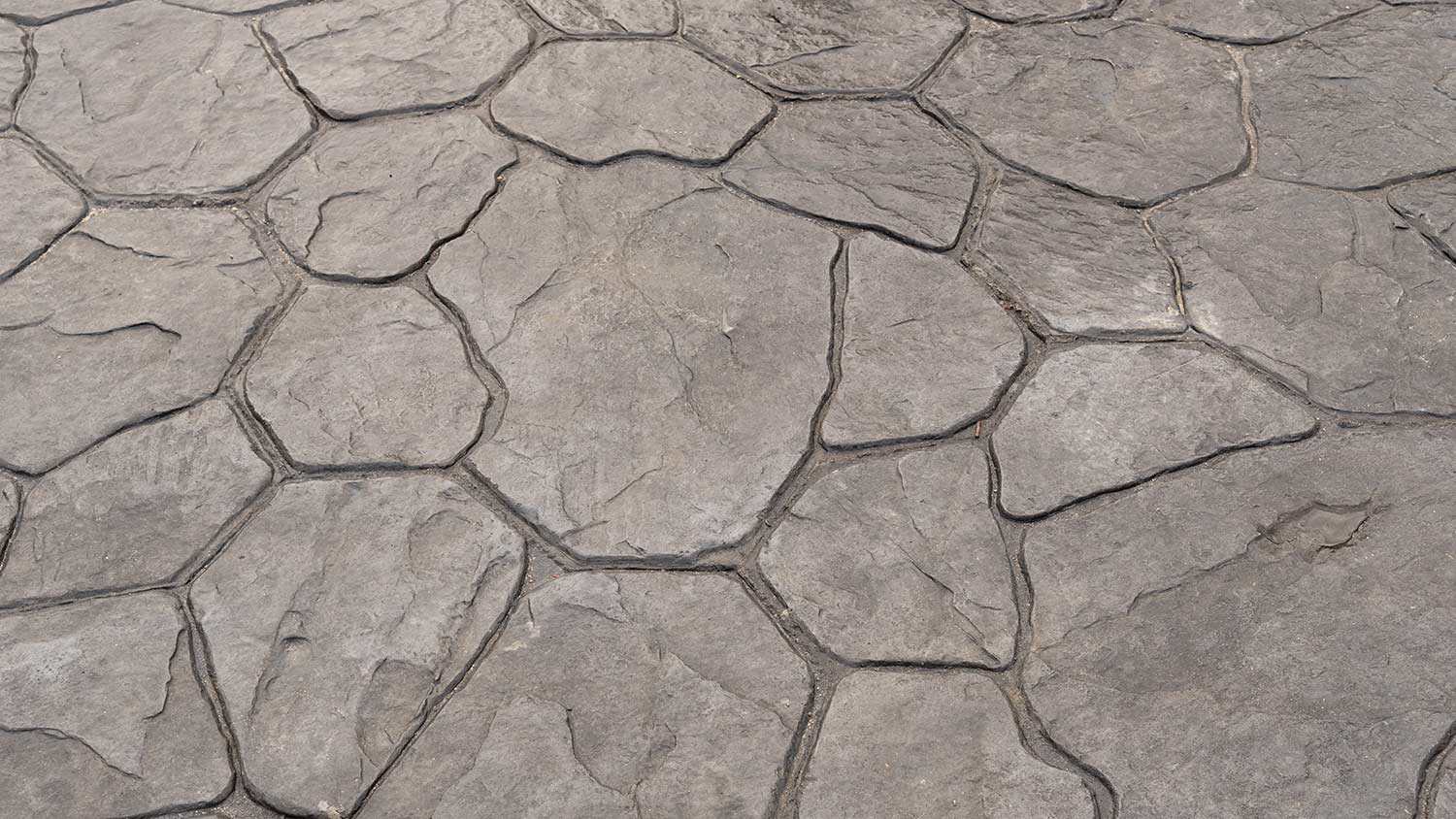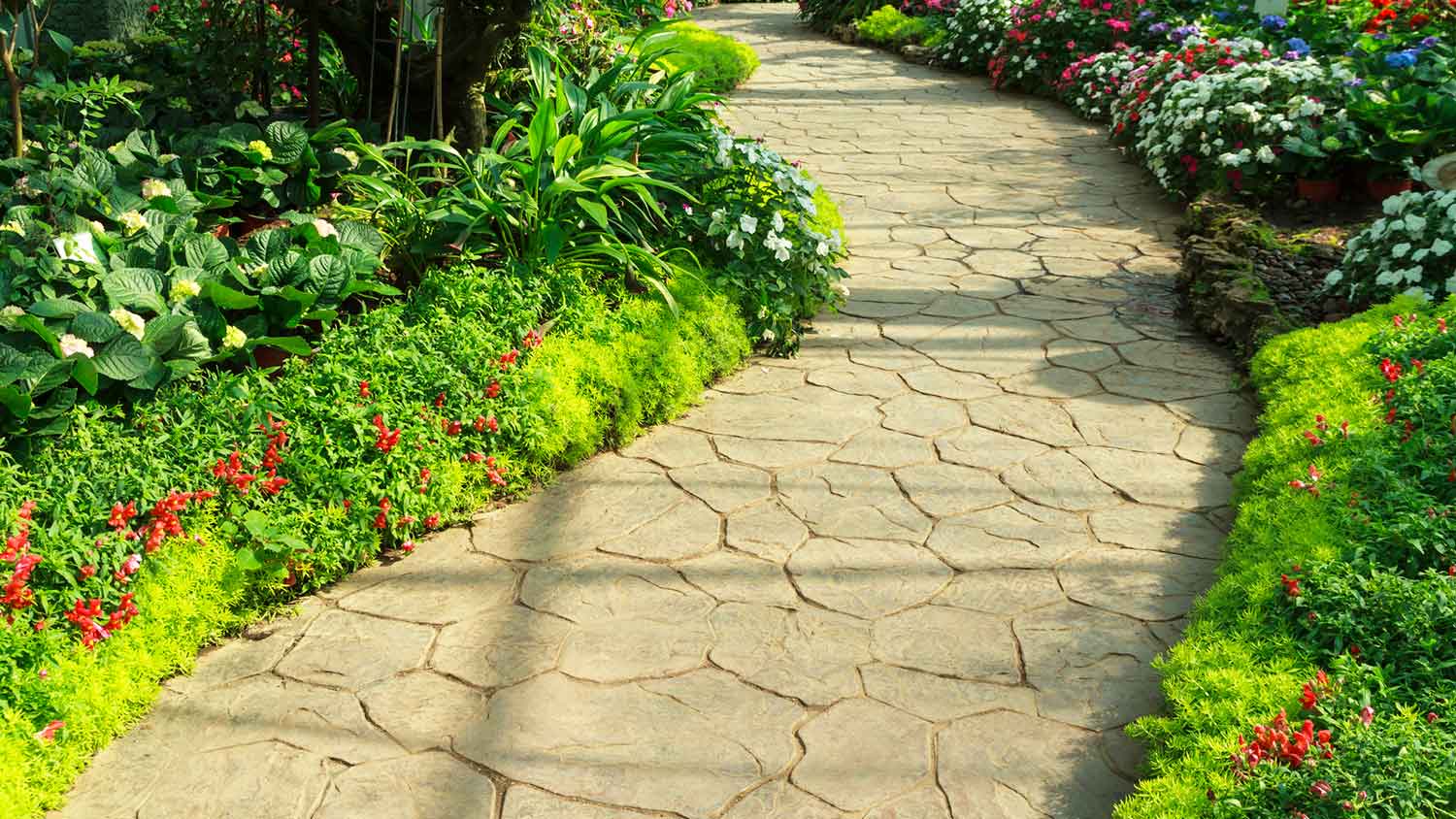
Discover stamped concrete wall cost estimates, including average prices, key cost factors, and tips to help you budget your project with confidence.
Keep your stamped concrete surfaces neat and clean


Hiring a pro to pressure wash stamped concrete costs between $100 and $200 versus renting one for about $35 to $180 per day.
Pressure washers can be dangerous when misused, with the greatest risk coming from accidental lacerations.
If you live in a place with chilly winters, call a pressure washing pro since stamped concrete is more likely to crack and wear down in colder climates.
Despite its stylish, high-end look, stamped concrete is actually one of the more affordable decorative flooring materials for driveways and patios. However, you'll need to put in a bit of work to ensure your stamped concrete holds onto its signature sheen. Below, we’ll explain how to clean stamped concrete to keep it looking shiny and make it last longer.

Stamped concrete is a decorative type of concrete that’s used to create driveways, patios, and walkways. It’s popular because, like regular concrete, it’s low-maintenance and easy to install—but you’ll still need to clean it. Regular cleaning will not only keep your stamped concrete looking good but extend its life span and reduce costs down the road.
To install a new stamped concrete driveway, patio, or other surface, local concrete stamping companies often charge between $8 and $28 per square foot. Putting that into perspective, the stamped concrete patio cost of an average-size patio is between $2,700 and $6,220. The price you pay will depend on a few factors, like your project size and the stamped concrete style you choose.
If your existing concrete needs an upgrade, the costs are significantly less. For a stamped concrete overlay (a new layer of stamped concrete over your current concrete slab), the average cost is $3 to $5 per square foot, but it can cost up to $20 per square foot. Similarly, the standard stamped concrete resurfacing cost is $7 to $20 per square foot.

To keep your stamped concrete floors in tip-top shape, it’s best to clean them at least a couple of times per year and any time they’re noticeably dirty or stained. Here’s how to do it.
Before you bring out the hose and mop, your first step is to sweep the stamped concrete to make sure it’s free from leaves, dirt, and other debris. You can use a broom to do this, or if you’re outside, you can use a leaf blower.
Next, give the concrete a thorough rinse with a garden hose or pressure washer on a low setting. Your goal here is to wash away any remaining debris, not completely clean the concrete yet.
After rinsing the surface, fill a bucket with warm water and mild soap (such as dish soap or laundry detergent), using 1 teaspoon of soap per gallon of water. Then, dunk a wet mop into the bucket and begin mopping the stamped concrete. You may need to change the water if it gets too dirty.
Alternatively, you can dump a little bit of the soapy water onto your stamped concrete and clean it with a push broom. Finally, wash away any soap with a final rinse.
If you’ve followed these steps but your concrete is still dirty, you can try using a pressure washer. For serious, dried-on oil and grease stains, you might need to use an alkaline cleaner, but make sure to follow the manufacturer’s instructions and perform a spot test on a small patch of concrete. If the cleaner causes any discoloration, ditch it and try another one.

While regularly cleaning stamped concrete is a great way to extend its life span, there are also other things you can do to keep it looking great. Some of these include:
Resealing stamped concrete every 2–3 years
Not using abrasive cleaning products or deicing salts
Cleaning up any oil spills right away before they stain
You should seal concrete every one to five years depending on the external conditions and level of wear and tear. A masonry contractor can advise on how often your surface will need resealing.
Stamped concrete is more likely to crack and wear down in cold climates. If you live in a place with chilly winters, your stamped concrete maintenance costs may be higher than they would be in a warmer environment.
In most cases, cleaning stamped concrete doesn’t require any special tools or equipment, so it’s fairly easy to do yourself. However, you may need to rent a pressure washer to clean deep stains. If you’d rather hire a pro, you can expect to pay around $100 to $200 for the job.
From average costs to expert advice, get all the answers you need to get your job done.

Discover stamped concrete wall cost estimates, including average prices, key cost factors, and tips to help you budget your project with confidence.

Discover stamped concrete cost. Learn about installation prices, cost factors, and how to save on your stamped concrete project.

Here’s what you need to know about stamped concrete overlays, including pros and cons, what they cost, and how they can give your concrete new life.

Stamped concrete maintenance takes a bit more delicacy than other surfaces. Here are seven ways to keep stamped concrete surfaces looking sharp.

A stamped concrete finish can brighten your dull driveway, walkway, or patio. Here are the questions to discuss with a stamped concrete installation pro.

Brushing and stamping are two common concrete finishes. Learn what sets brushed and stamped concrete apart and how to choose between them.